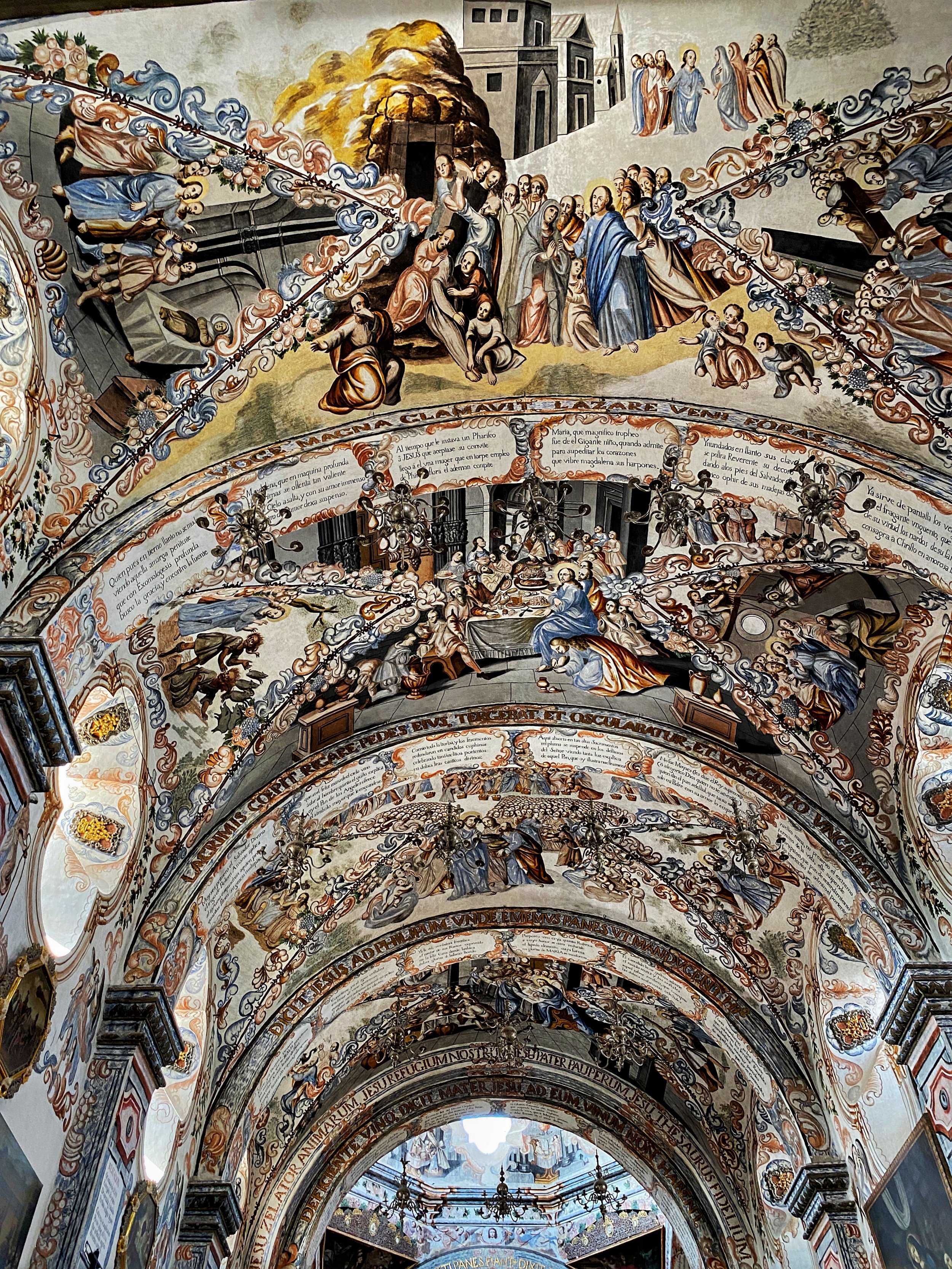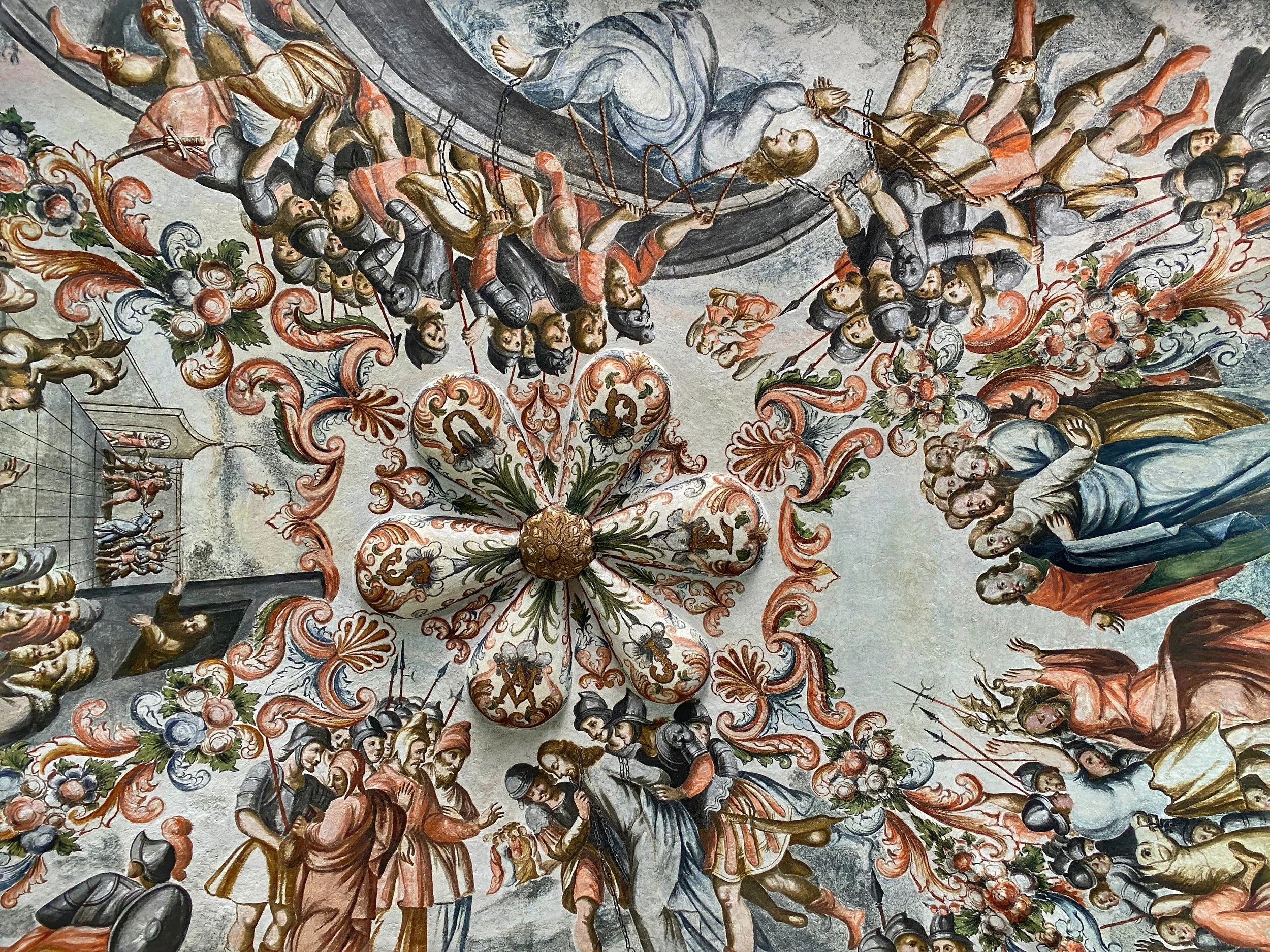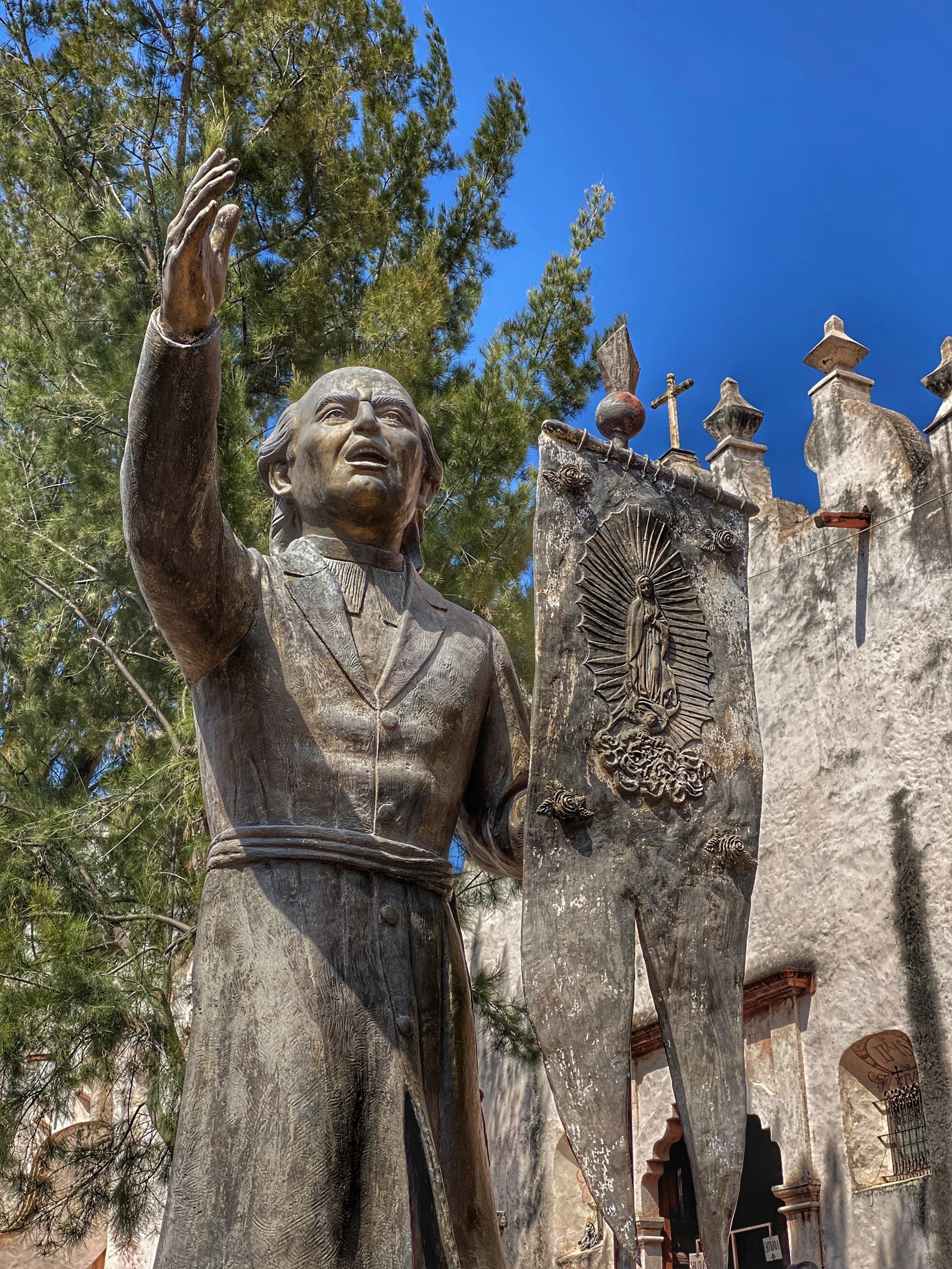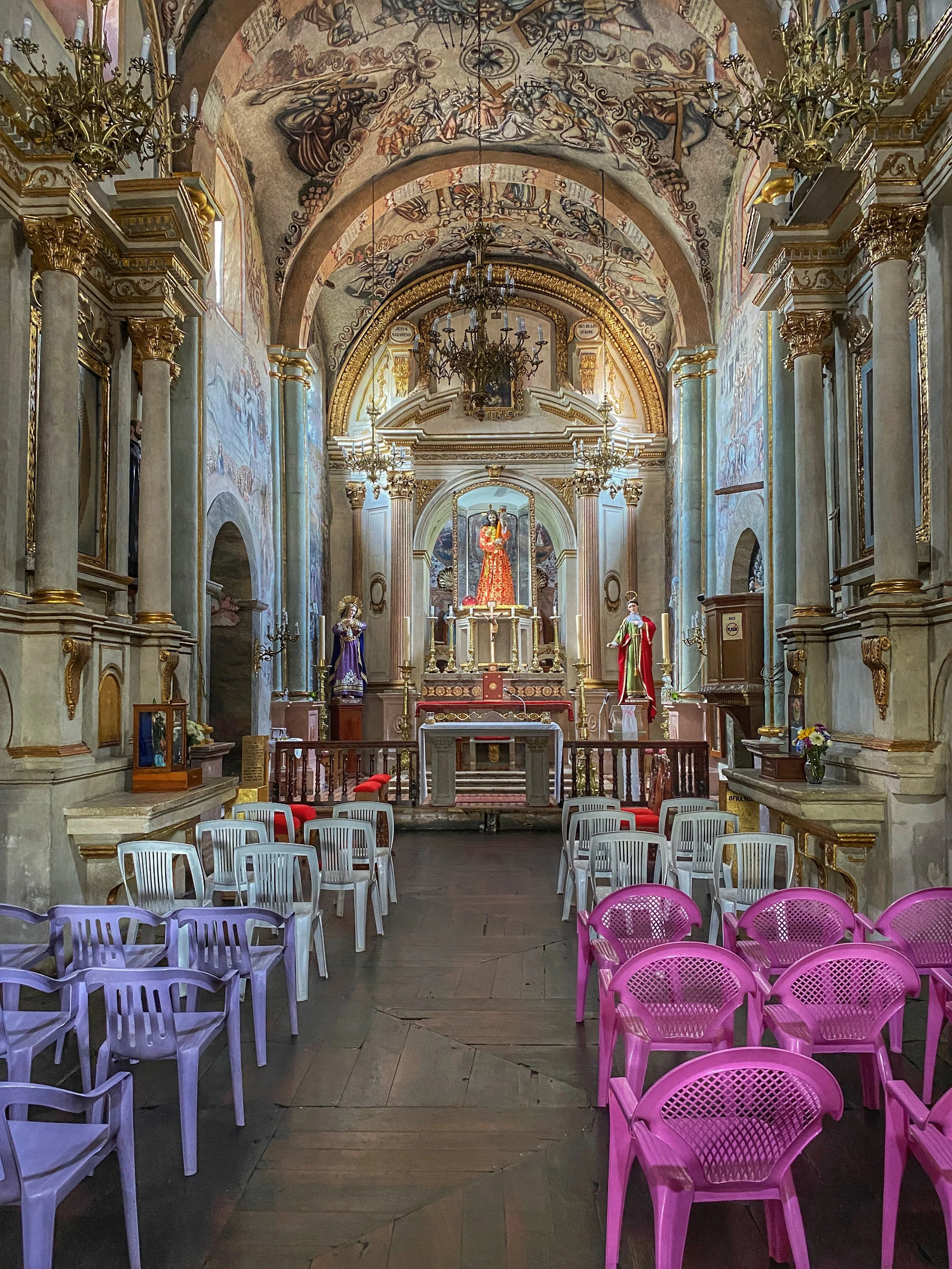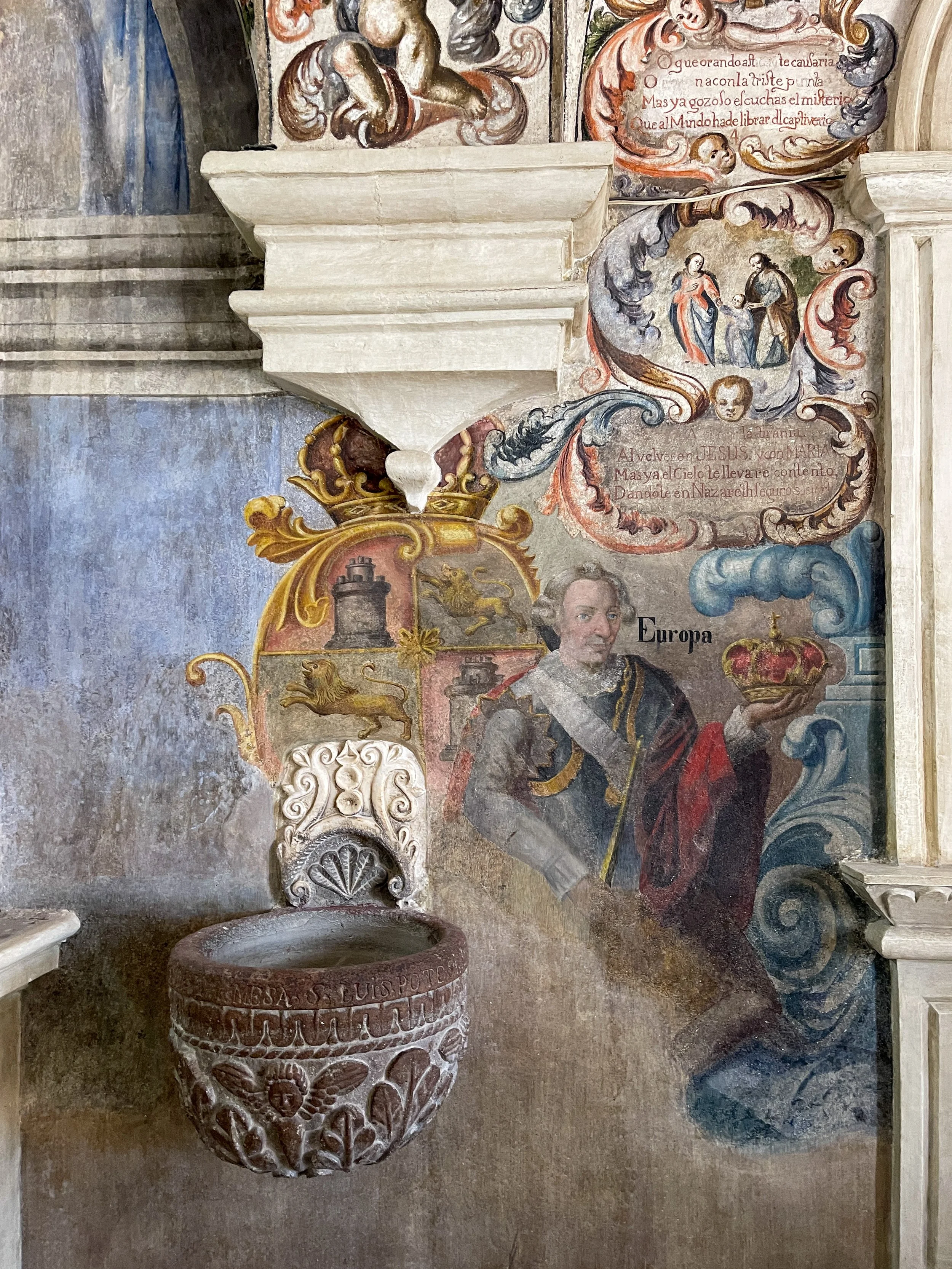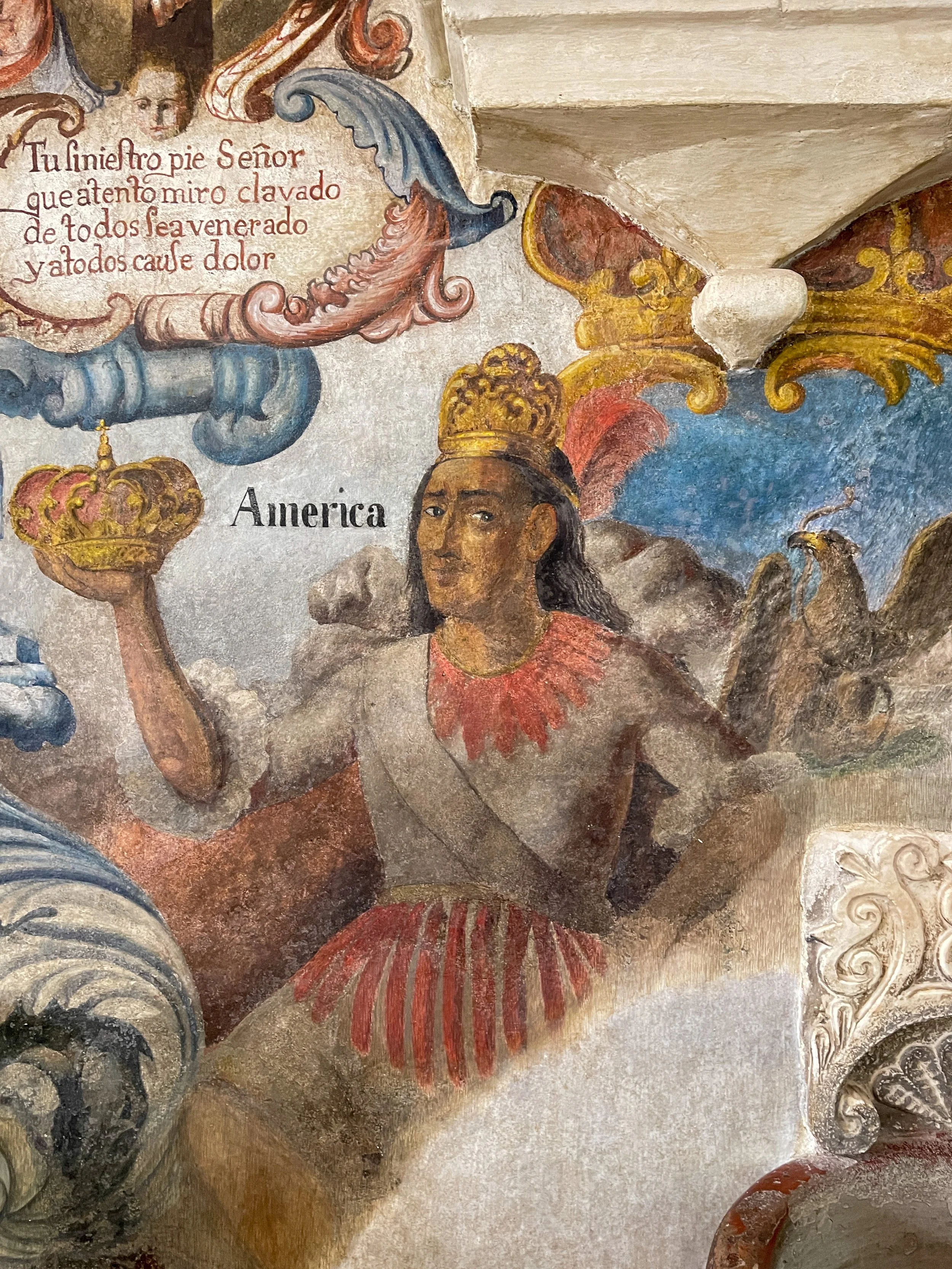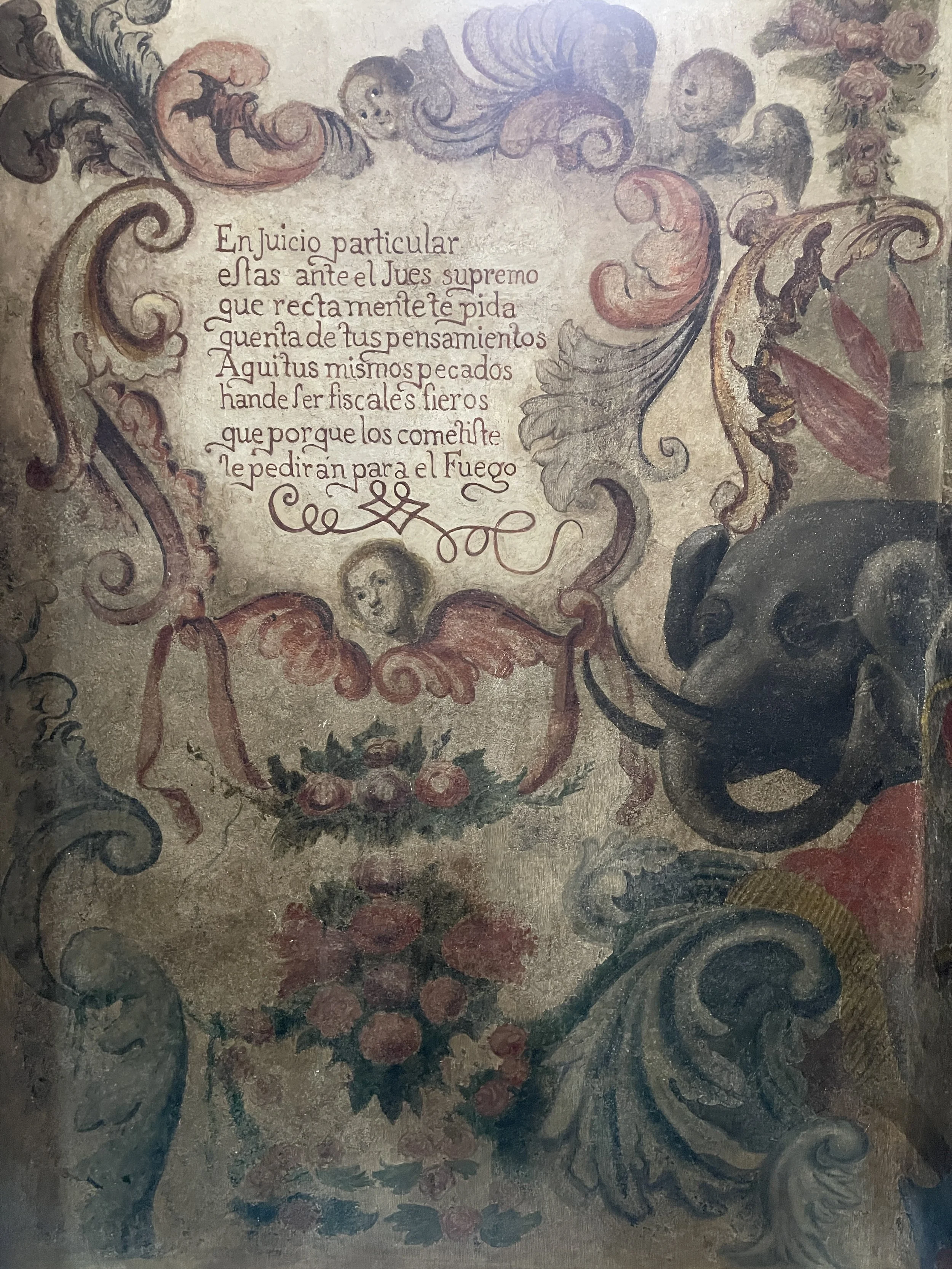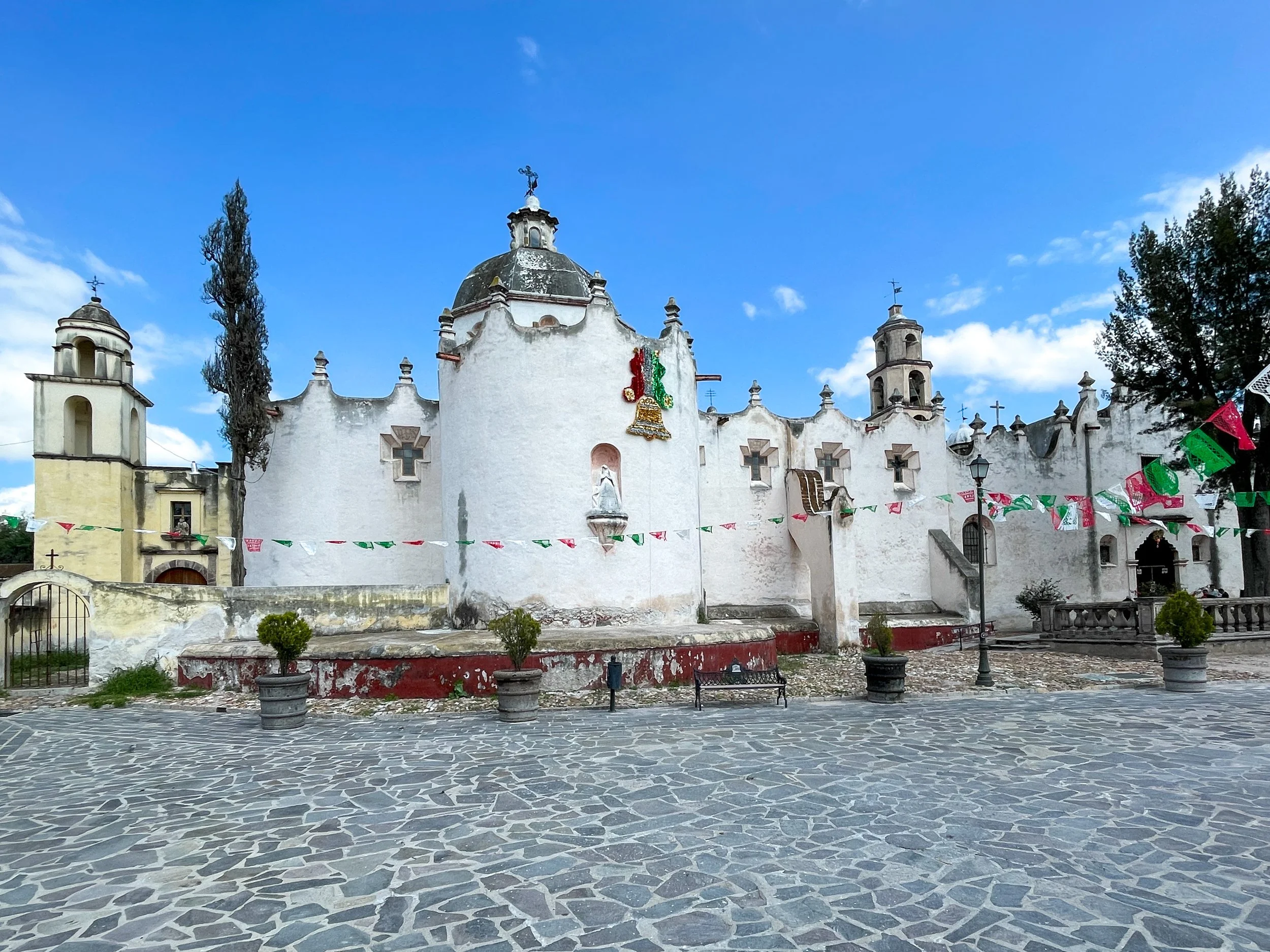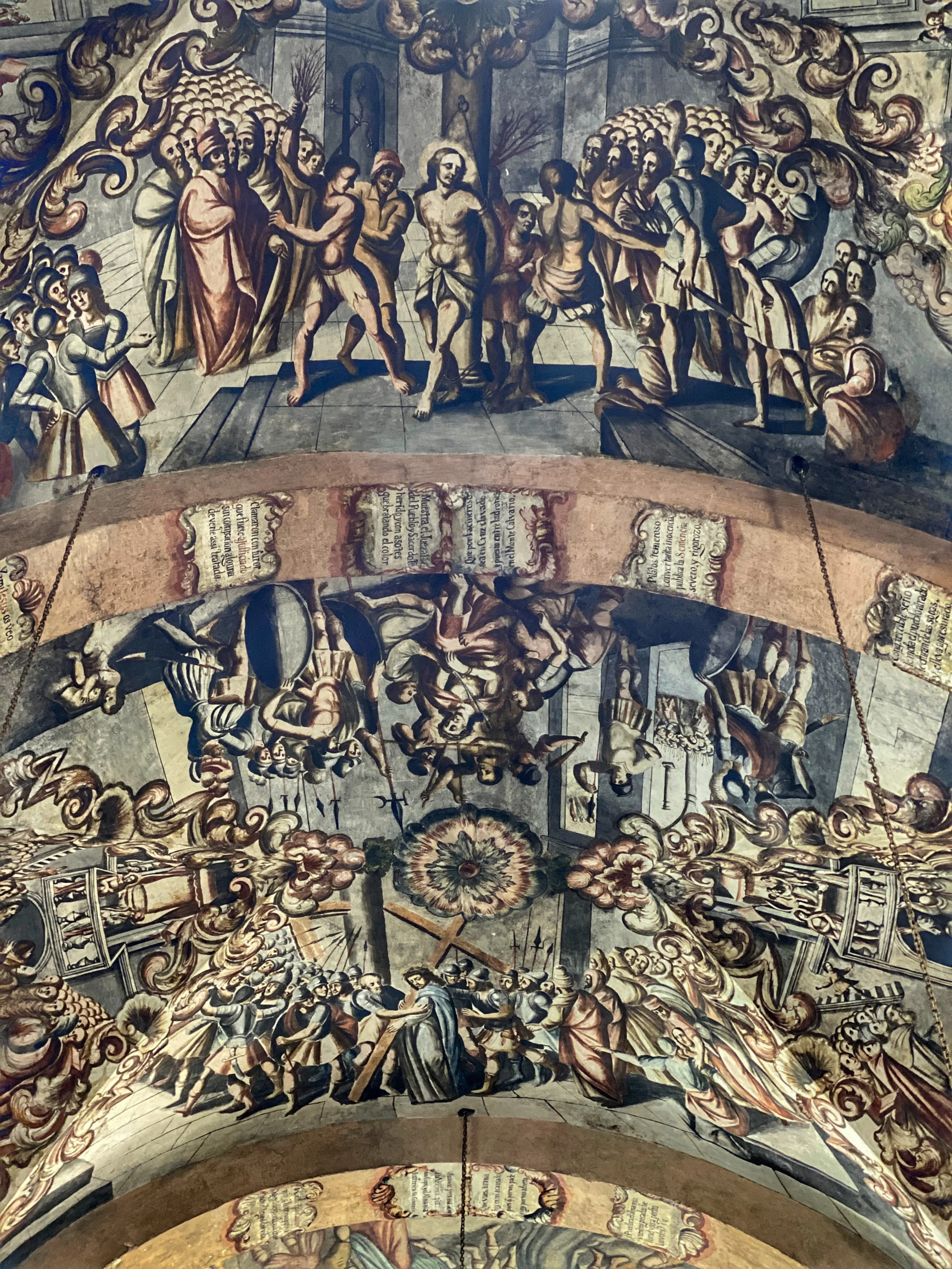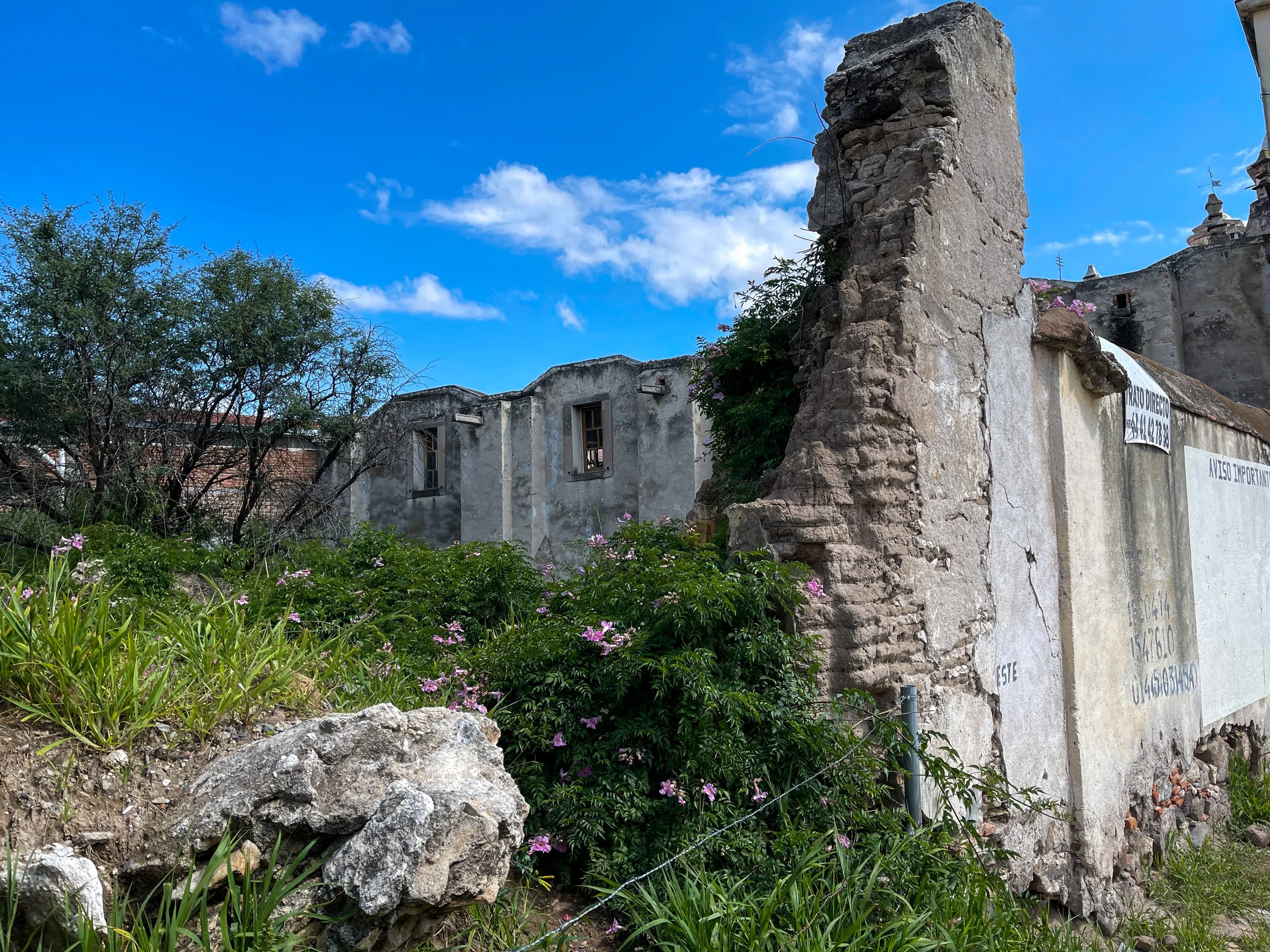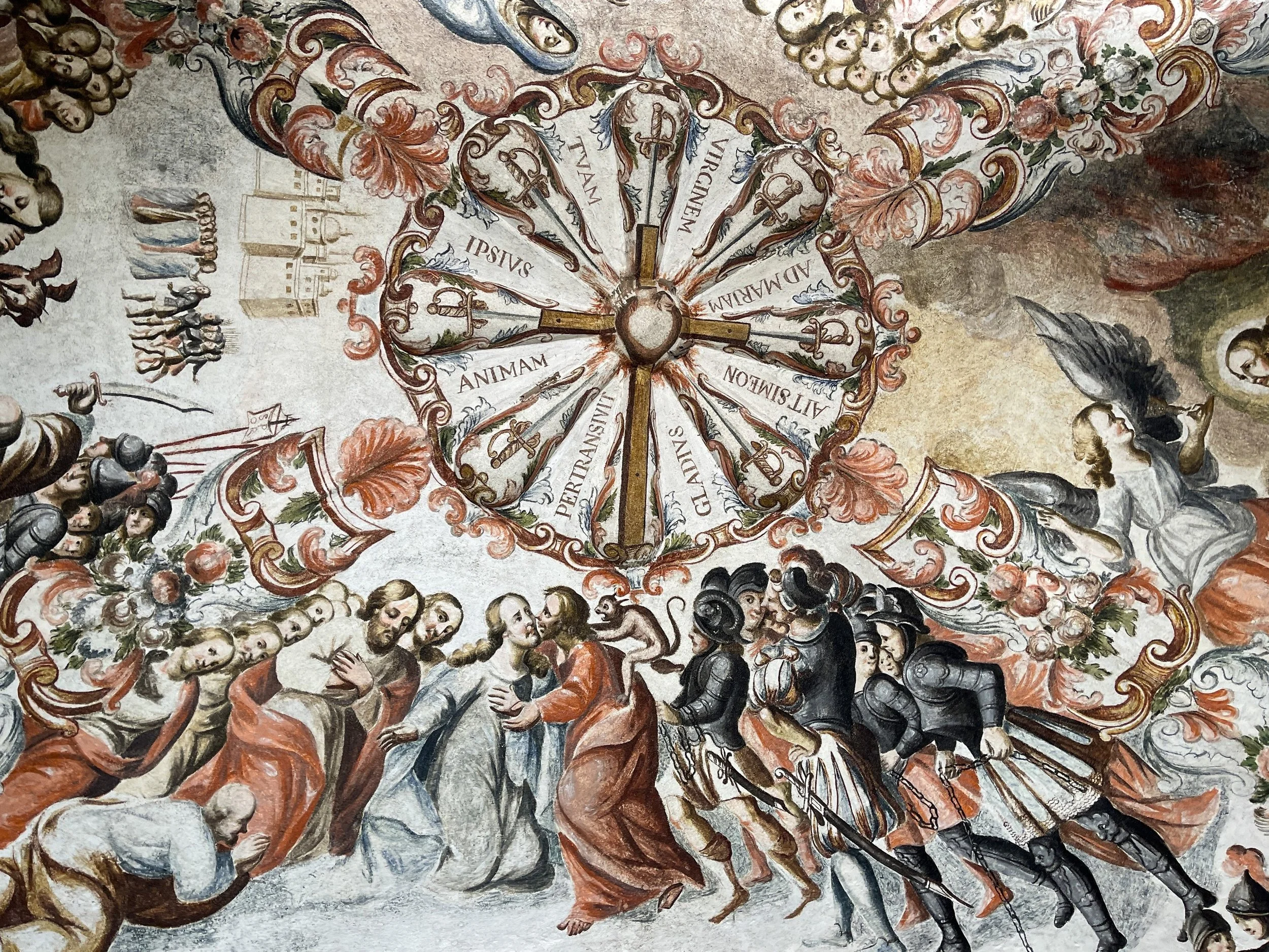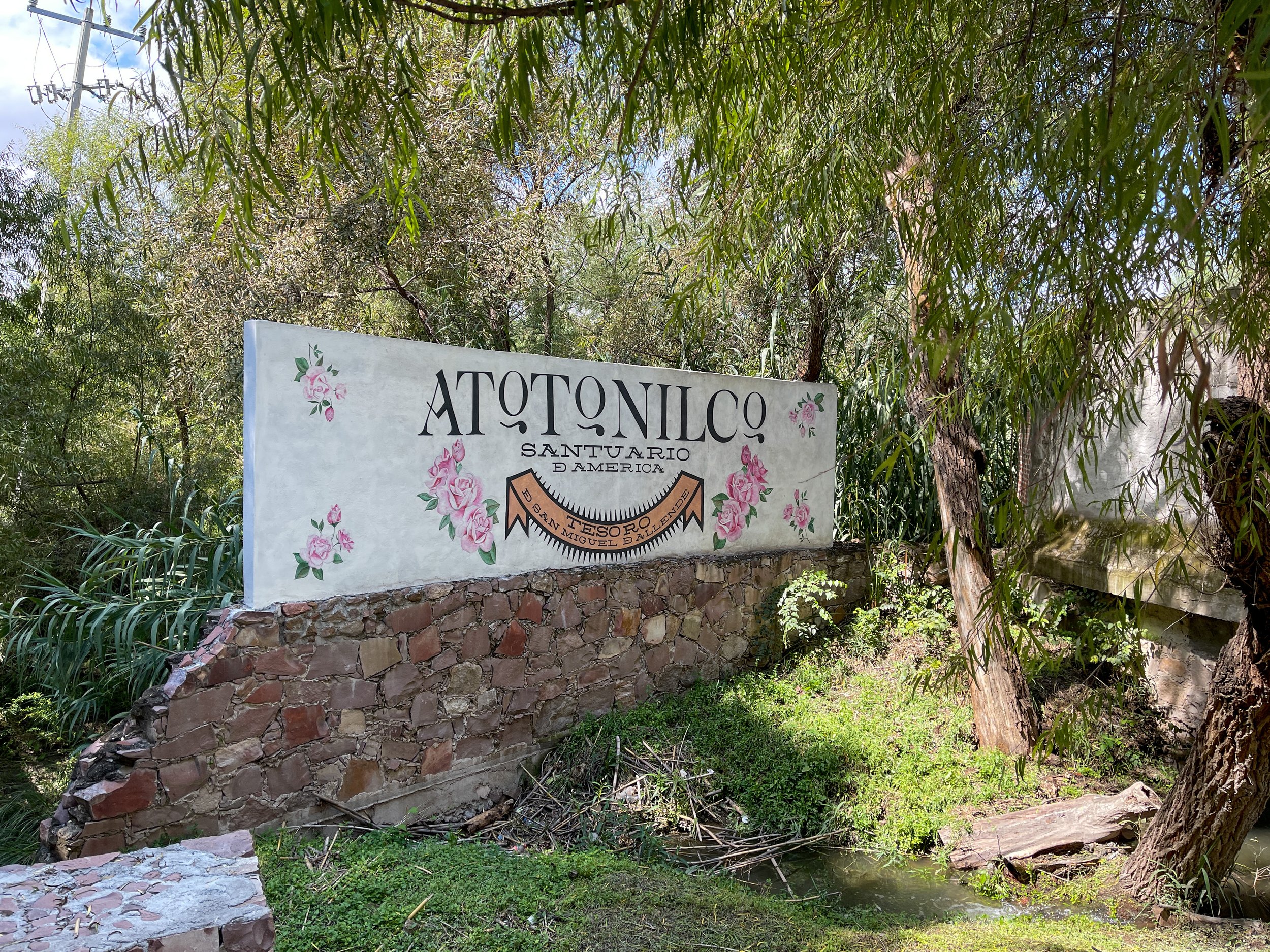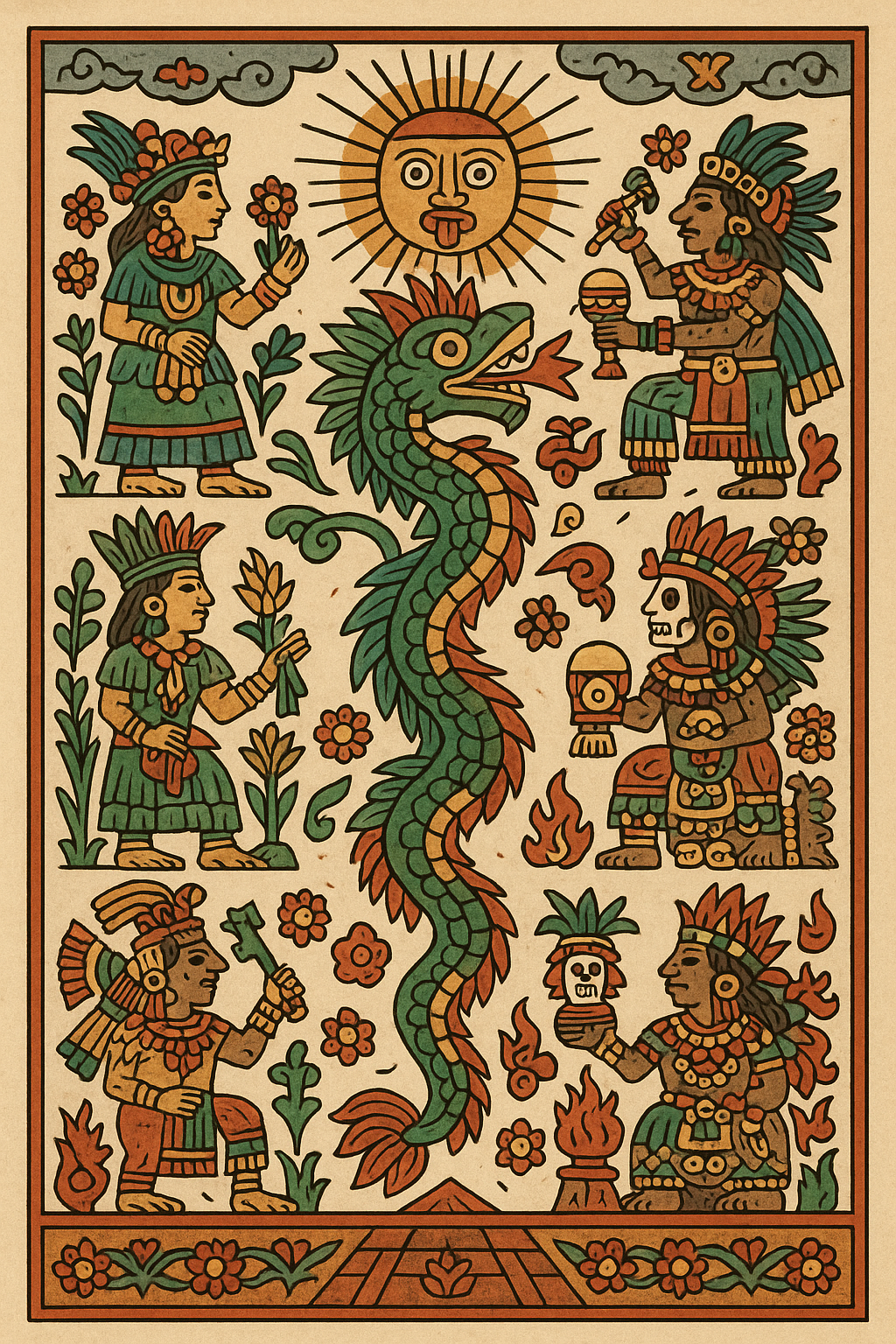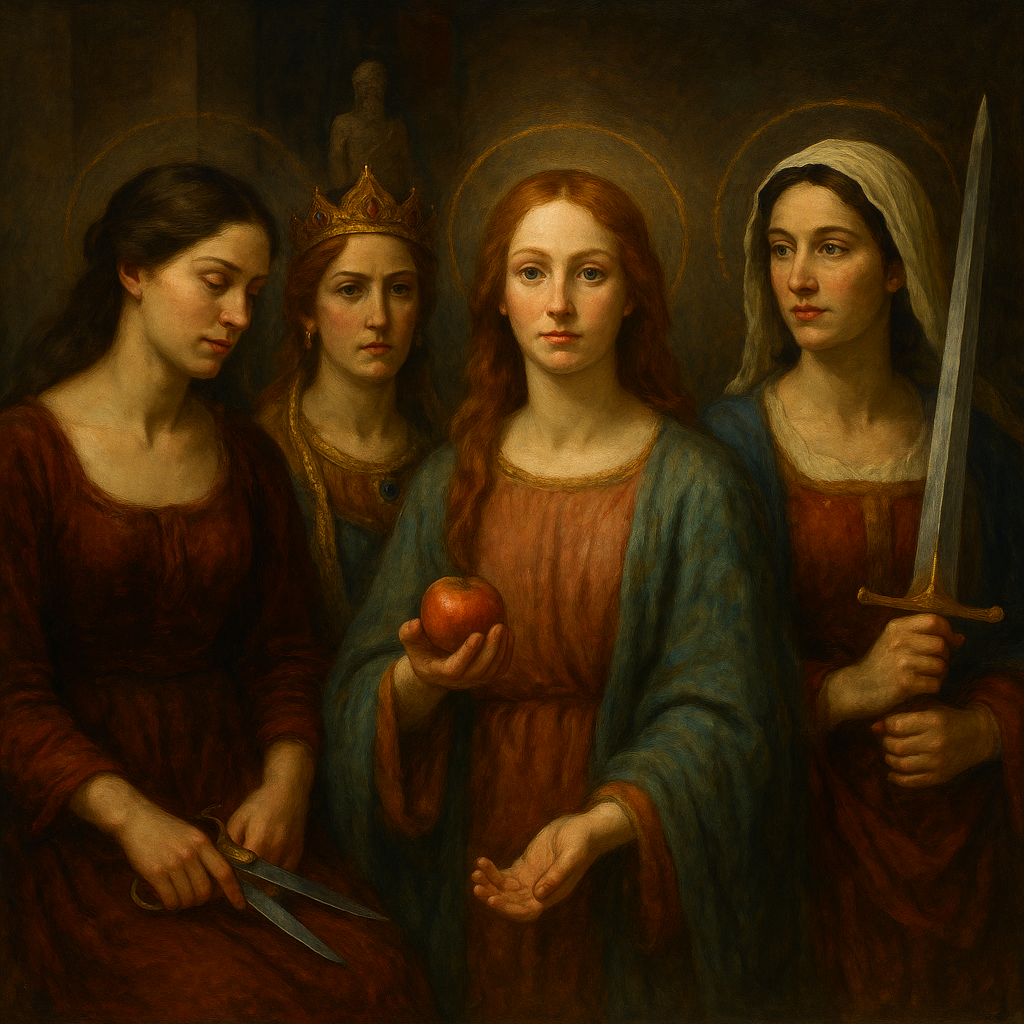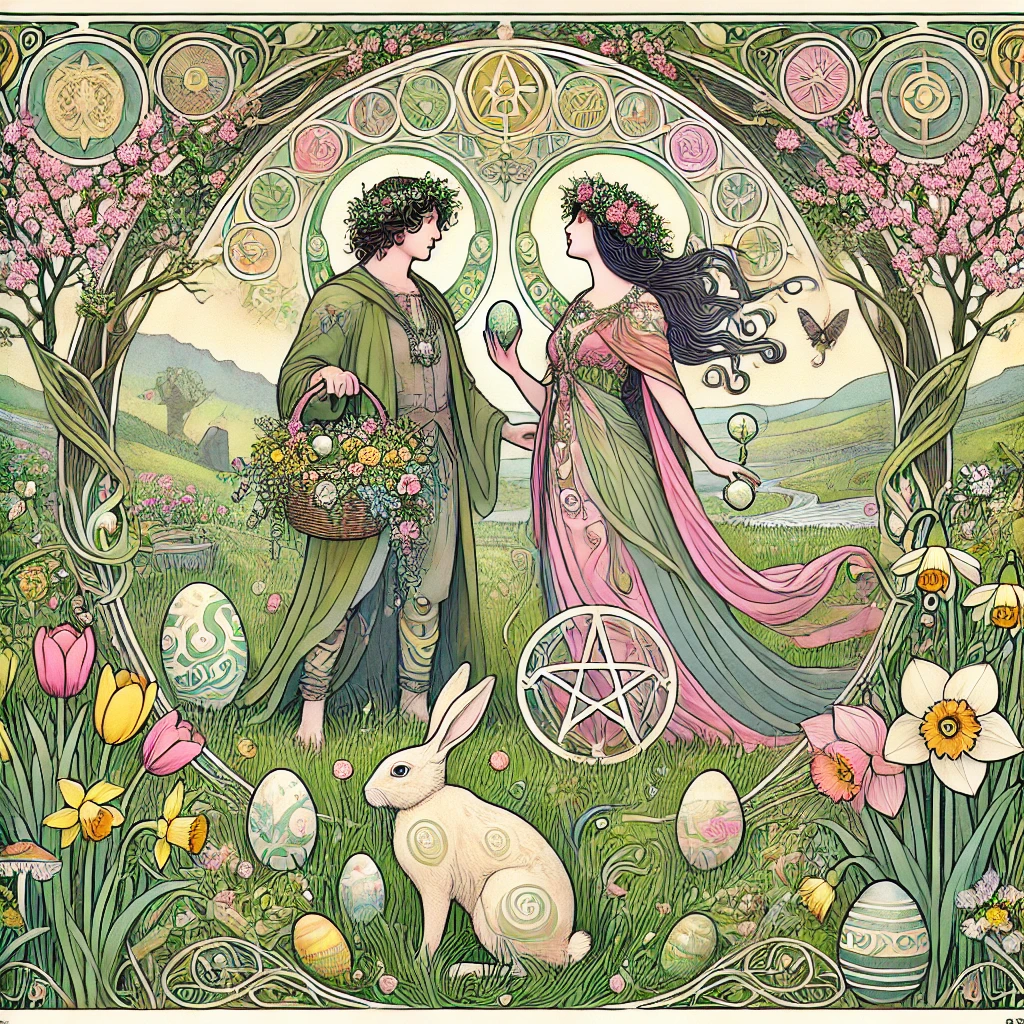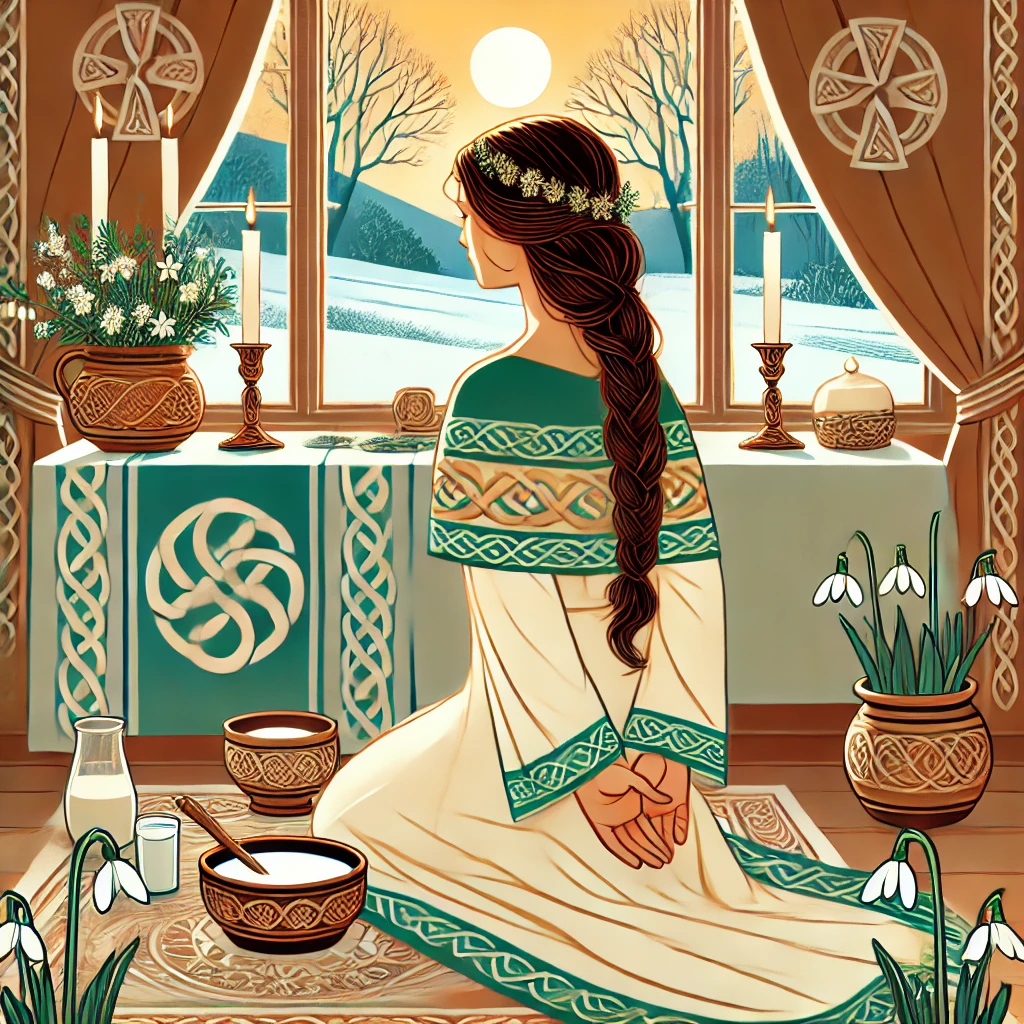No surprise that this UNESCO site has been dubbed the “Sistine Chapel of Mexico.” Pair it with La Gruta hot springs for an easy day trip from San Miguel de Allende.
Most of the murals at Atotonilco depict scenes from Jesus’ life, including his resurrection (top) and the Last Supper (just below).
We knew we wanted to pair our trip to La Gruta Spa with a visit to the Sanctuary of Atotonilco (a tough one to pronounce, but try, “Ah-toe-toe-neel-ko”).
The trouble was, we didn’t know how we would get there. To get to La Gruta, we had to bum a ride from someone who works at our first stop of the day, the quirky Chapel of Jimmy Ray, because we couldn’t get any cell service to call a cab or Uber.
Most of the murals at Atotonilco show scenes from the life of Christ, including the resurrection. The style is known as Mexican Folk Baroque.
I looked on Google Maps and determined that the church was only a 15-minute walk away. And once we got past the somewhat busy road that runs in front of the hot springs complex along a highway, we were able to walk on a peaceful cobblestone sidewalk. In fact, we started to see signs indicating that this is a pilgrimage route. So we followed them along a quiet road, Calle Principal, through a canopy of trees, and into a small village, where the church of Atotonilco can be found amid a few businesses and market stalls.
Almost every inch of the walls and ceilings are covered in murals that date back to the mid-1700s.
“Pilgrims complete their journeys on their knees, wear hair shirts, tie cacti to their chests and wear crowns of thorns.
Atotonilco has also become a hotspot for flagellants — religious devotees who whip themselves to mimic the pain Jesus experienced en route to his crucifixion.”
The façade isn’t much — the wonders lie within.
A statue of Don Miguel Hidalgo y Costilla, a Catholic priest who, while waving a banner of the Virgin of Guadalupe taken from the Sanctuary of Atotonilco, delivered an impassioned speech for the people to break the yoke of Spanish oppression — and launched the Mexican War of Independence
From the — dare I say — bland exterior, you’d never guess at the gorgeous artwork inside. The façade consists of white walls devoid of decorations, aside from a window here and there. The wall around the church makes it feel like it’s more of a fortress than a sanctuary.
The main church was closed off when we visited — and we were surprised to see that it had plastic chairs instead of pews.
When we went, there was a crowd of tourists, mostly from Mexico, all pressing into the small space. For some reason, the church itself was roped off, with pink and purple plastic chairs in lieu of pews, and the altar visible in the distance.
The frescoes were painted over three decades by a local artist, Miguel Antonio Martínez de Pocasangre.
There are supposedly quite a few chapels and niches inside the structure, but we were only able to go into the Capilla del Santo Sepulcro, or the Chapel of the Holy Burial — for a small fee. A couple of dioramas depict Jesus’ death on the cross. But it’s the intricate, gorgeous paintings, created by a local artist, Miguel Antonio Martínez de Pocasangre, that prompted UNESCO to declare this a World Heritage Site in 2008.
John the Baptist baptizes his cousin Jesus in the Jordan River in this mural at Atotonilco.
Judas, shown with a demon straddling his back, betrays Jesus for 30 pieces of silver, while a dog barks at him.
Most of the murals at Atotonilco show the life of Christ — though at least one is from the Old Testament of the Burning Bush talking to Moses.
The frescoes cover the main events of Christ’s life — his baptism by John the Baptist, the Last Supper, Judas’ betrayal, the walk to his crucifixion, his resurrection outside his tomb — though I did spot at least one Old Testament story as well: Moses and the Burning Bush. And there are words everywhere — even long passages of text. The walls are a Bible come to life.
A holy water font surrounded by de Pocasangre’s murals
An indigenous ruler represents the Americas near the entrance of the church.
The walls of the sanctuary are like a book come to life — there are entire paragraphs in Spanish throughout.
The color palette is minimal — mostly salmon and tan, with some blue, brown, gold and bits of green acting as leaves on the curlicue motif, all set against the white walls of the church.
A local priest, Father Neri, had a dream where Jesus told him to build a church. Neri did so, founding el Santuario de Atotonilco.
A Dream Come True
Atotonilco means Place of the Hot Waters in the local indigenous tongue. Father Luis Felipe Neri de Alaro had been preaching in the nearby town of Dolores but had fallen ill and decided to check out the curative powers of the thermal springs.
While dozing under a mesquite tree one day, Father Neri had a dream in which Jesus wore the crown of thorns and carried the cross. Christ said that he wanted the spot where the priest was napping to become a center of penitence and prayer. Neri awoke, filled with divine inspiration, and did just that, founding el Santuario de Atotonilco in 1740. Another possible factor in determining to build the church here: The site was used in fornication rites among the indigenous peoples of the area, and Neri wanted to stop this practice.
Construction continued over the next 36 years. Neri commissioned de Pocasangre to paint the now-famous murals. The artist’s style is known as Mexican Folk Baroque — a blending of local traditions and the ornate flourishes of Flemish masters.
The statue of el Señor de la Columna shows Jesus with a bloody back from being whipped. It’s paraded through town in a procession held the week before Easter.
Hair Shirts, Crowns of Thorns and Flagellation
Meanwhile, Neri wanted to honor Christ’s wish in the dream he had — namely, that the sanctuary not just be a place of prayer but one of penitence as well. And Neri’s view of this was of a gruesome, physical variety.
A symbol of flagellants is Christ tied to a column being whipped, as seen at the top of the image.
From the church’s origin, it has been a place of pilgrimage, with several weeks each year devoted to rites of penitence, drawing up to 5,000 pilgrims in a single week and 100,000 a year. The attached building consists of dormitories and dining halls to house the influx of pilgrims.
Behind the church are dormitories and dining halls for the 100,000 pilgrims who visit each year.
And many of these pilgrims are hardcore. They complete their journeys on their knees, wear hair shirts (garments made of rough, uncomfortable cloth), tie spiked nopal cacti to their chests and wear their own crowns of thorns. Atotonilco has also become a hotspot for flagellants — religious devotees who whip themselves to mimic the pain Jesus experienced en route to his crucifixion.
It would’ve been interesting, to say the least, to have been in the village during one of the times when the flagellants descended upon it. But, alas, the town was quite sleepy when we visited.
Looking back at the main entrance to the Sanctuary of Atotonilco
In 1994, the frescoes got a refresh — by the same team that worked on restoring the Sistine Chapel in Vatican City.
The sanctuary, with its numerous murals and frescoes, has been declared a UNESCO World Heritage Site.
Not surprisingly, after 200 years or so, the frescoes had faded. In fact, in 1994, the World Monuments Fund named Atotonilco one of the world’s 100 Most Endangered Monuments, which inspired a major restoration project that same year. The church was in good hands: Some of the team that had worked to restore the Sistine Chapel in the Vatican City helped breathe new life into these frescoes. In addition, the walls were cleaned, the foundations reinforced and a new drainage system installed.
In the Capilla del Santo Sepulcro, or the Chapel of the Holy Burial, there are scenes of Jesus appearing after his resurrection.
Jesus shows off his stigmata to prove that he was crucified and yet rose from the dead.
Duke and I did our best to snap some photos and move through the crowd, though the front of the chapel was a popular spot for family photos among the locals.
The only area open for tourists when we visited was a side chapel that showed Christ on the cross — a popular spot for family photos.
Another diorama, this one to the right of the main altar, shows Jesus being taken down from the cross.
A statue of Joseph with baby Jesus on his shoulder, while behind him Veronica shows the veil she used to wipe Christ’s face while he was en route to Calvary to be crucified.
After about half an hour, we decided to head back. We lucked out and saw a taxi passing by as we emerged from the sanctuary. We waved it down and caught a ride back to San Miguel de Allende for a reasonable rate. –Wally
Follow the pilgrimage signs to reach the impressive Sanctuary of Atotonilco.
Santuario de Jesús de Nazareno de Atotonilco
Calle Principal s/n
37700 Guanajuato
México

